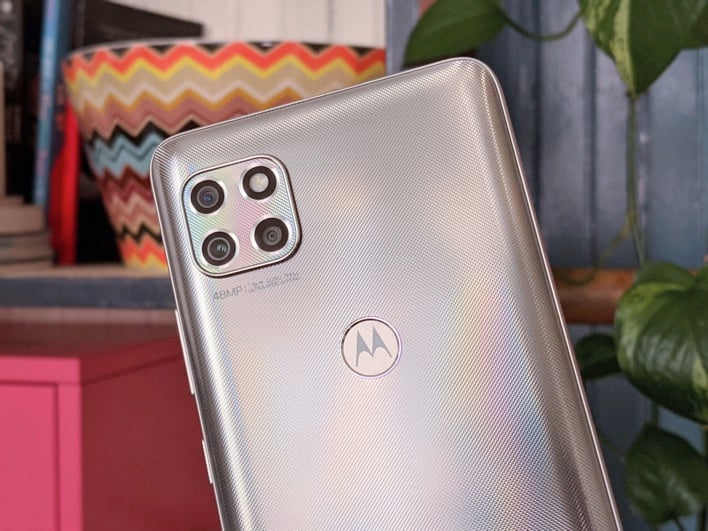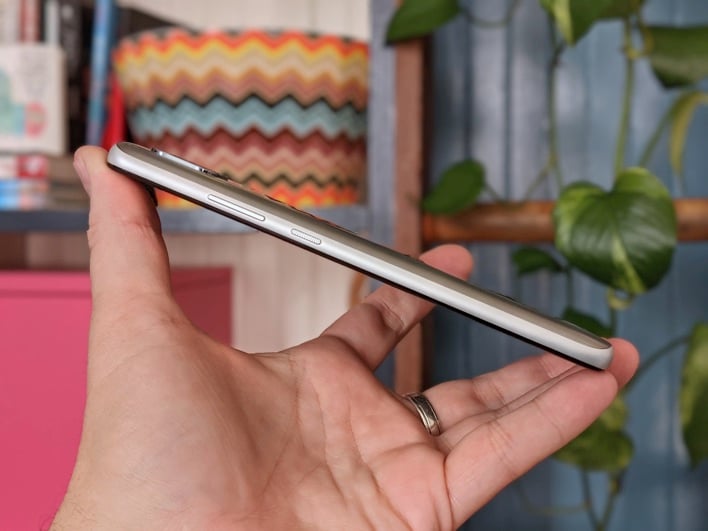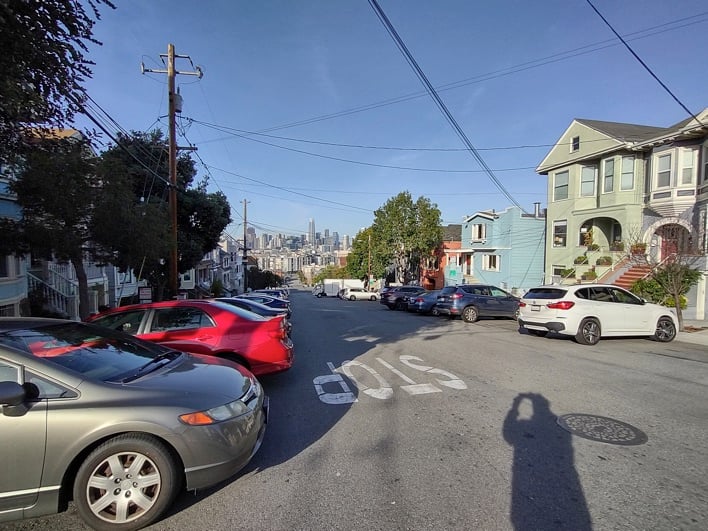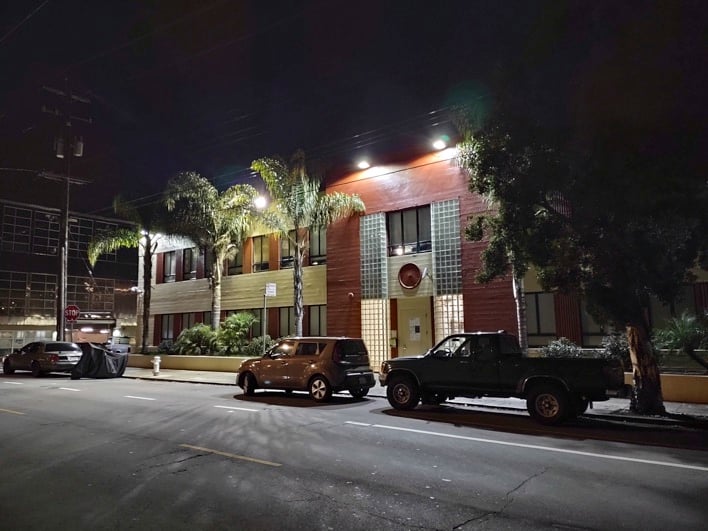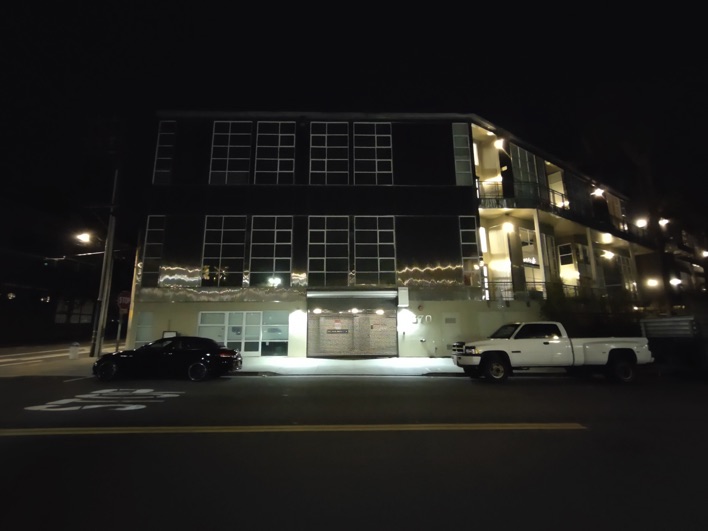Moto One 5G Ace Review: Solid 5G Phone, Battery Life Champ
Moto One 5G Ace: This $399 5G Handset Keeps On Going, And Going, And Going
One positive trend in 2020 was that
of affordable mid-range 5G-capable smartphones, with devices like
the OnePlus Nord, Moto One 5G, Pixel 4a 5G, TCL 10 5G UW,
and Realme 7 5G, all costing less than $500 and packing decent
specs -- including reasonably quick SoCs, multiple rear cameras, and even high refresh-rate displays. Thankfully, 2021 is looking even more
promising, and January isn’t even over yet.
The OnePlus Nord N10 5G ($299, Snapdragon 690) recently landed in the US, and Moto just launched the Moto One 5G Ace ($399, Snapdragon 750G), a detuned and unlocked variant of last year’s AT&T and Verizon-exclusive Moto One 5G ($445, Snapdragon 765). So, how do the Moto One 5G Ace and Moto One 5G differ? Is the Ace as good as its model naming suggests, despite being even cheaper? Read on for our review.
The OnePlus Nord N10 5G ($299, Snapdragon 690) recently landed in the US, and Moto just launched the Moto One 5G Ace ($399, Snapdragon 750G), a detuned and unlocked variant of last year’s AT&T and Verizon-exclusive Moto One 5G ($445, Snapdragon 765). So, how do the Moto One 5G Ace and Moto One 5G differ? Is the Ace as good as its model naming suggests, despite being even cheaper? Read on for our review.
Motorola Moto One 5G Ace Hardware And Design
Put the Moto One 5G Ace and the Moto One 5G side-by-side and the family
resemblance is obvious. In the back, you’ll find a similarly
rounded square camera pod and similarly dimpled texture under its faux glass surface. Our review unit came in a Frosted Silver hue
which produces lovely rainbow reflections in direct sunlight. If
that’s too much excitement for you, a more subdued Volcanic Gray
color is also available.
The Moto logo in the back of the Ace isn’t just a stencil. It’s home to a capacitive fingerprint reader, unlike the One 5G, where the power / lock key doubles as the fingerprint reader. In front, both have 6.7-inch displays, but different aspect ratios and punch hole layouts. At 166.1 x 76.1 x 9.9mm, the Ace (20:9) is a couple mm wider and shorter than the One 5G (21:9). It’s also one mm thicker and slightly heavier (212g vs. 207g).
The Moto logo in the back of the Ace isn’t just a stencil. It’s home to a capacitive fingerprint reader, unlike the One 5G, where the power / lock key doubles as the fingerprint reader. In front, both have 6.7-inch displays, but different aspect ratios and punch hole layouts. At 166.1 x 76.1 x 9.9mm, the Ace (20:9) is a couple mm wider and shorter than the One 5G (21:9). It’s also one mm thicker and slightly heavier (212g vs. 207g).
Instead of two punch holes in the top left corner, the Ace has
a single opening in the top middle of the screen. This also means
it only features one selfie camera, which is the same 16MP main
front shooter as on the Moto One 5G. Likewise, bezels are reasonably
small, but there’s a more pronounced chin at the bottom of the
display. The Ace also shares the One 5G’s plastic build with a
faux-metal mid-frame and faux-glass back.
Despite the overall shape of the camera bumps being similar, with four circles in a square layout, there are only three shooters in the rear of the Ace (vs. four on the One 5G) -- a 48MP main camera, an 8MP ultrawide, and a 2MP macro. The fourth circle is home to the LED flash instead of a dedicated depth sensor. Also missing from the Moto One 5G Ace is the One 5G’s unique light ring around the macro lens.
Despite the overall shape of the camera bumps being similar, with four circles in a square layout, there are only three shooters in the rear of the Ace (vs. four on the One 5G) -- a 48MP main camera, an 8MP ultrawide, and a 2MP macro. The fourth circle is home to the LED flash instead of a dedicated depth sensor. Also missing from the Moto One 5G Ace is the One 5G’s unique light ring around the macro lens.
The buttons and ports are arranged exactly the same way on the
Ace as on the One 5G. You’ll find the volume rocker and ridged
power/lock key on the right side, and the mono speaker, primary
mic, USB Type-C port, and headphone jack along the bottom edge.
The left side is home to the nano-SIM / microSD tray, and there’s
a secondary mic on top. In all, the Ace looks and feels nice
enough, and is IP52 splash resistant.
Here's an unboxing video to get you acquainted with Moto's latest value Android handset...
|
| Processing And 5G Platform | Qualcomm
Snapdragon 750G |
| Display | 6.7" FHD+ LTPS, 2400x1080 resolution, HDR 10 |
| Memory | 6GB |
| Storage | 128GB + microSD |
| Rear-Facing Cameras | 48MP
f/1.8 Main PDAF - 8MP f/2.2 118º Ultra-Wide - 2MP f/2.4
Macro AF |
| Front-Facing Cameras | 16MP f/2.0 |
| Video Recording | Up to 4K @ 30fps, 1080p @ 60fps, 1080p slow-mo |
| Battery | 5000 mAh |
| OS | Android
10 |
| Dimensions | 166.1 x 76.1 x 9.9mm |
| Weight | 212 grams |
| Connectivity | 802.11ac Wi-Fi, Bluetooth 5.1+LE,
NFC, FM radio, USB-C, LTE, 5G Sub-6 Only |
| Colors | Frosted
Silver, Volcanic Gray |
| Pricing | Find the Moto One 5G Ace @ Amazon, Starting at $399 |
Moto One 5G Ace Display Quality
Like the One 5G, the Ace comes with a 6.7-inch FHD+ LTPS screen
and includes HDR10 support. But instead of sharing the One 5G’s
21:9 aspect ratio and 90Hz refresh rate, the Ace features a more
traditional 20:9 aspect ratio (2400 x 1080 pixels, 393ppi) and
standard 60Hz refresh rate. Still, it’s a nice display, with
punchy colors, good contrast, and decent viewing angles. It’s also
bright enough for complete usability in direct sunlight.
Moto One 5G Ace Camera Performance And Image Quality
Basically, the Ace inherits most of the One 5G’s cameras,
including the 48MP f/1.8 0.8-micron main shooter (with PDAF), 8MP
f/2.2 118-degree 1.12-micron ultrawide, and 16MP f/2.0 1.0-micron
selfie camera. It drops the 8MP ultrawide in front, and the 2MP
depth sensor in the back, however. The 5MP macro gives way to a 2MP f/2.4
1.75-micron macro lens (with AF). And overall, imaging performance
is similarly compromised.
The Ace uses 4-to-1 pixel binning on the main camera and selfies shooters, to reduce noise and improve low-light performance -- just like the One 5G. By default, pictures shot with the main sensor are 12MP, and images taken with the selfie lens are 4MP. While there’s a 16MP option for selfies, there’s no full-resolution 48MP mode for the main camera. In addition, night mode is only available on the main and selfie shooters. There’s no OIS (Optical Image Stabilization).
When it comes to capturing video, the Ace supports 4k 30fps and 1080p 60fps with the main camera, and 1080p 30fps with the ultrawide and selfie shooters. Audio is recorded in stereo, and video is stabilized. The usual Moto shooting modes are available, including portrait, night, panorama, pro, macro (720p), cutout, spot color, cinemagraph, group selfie, filters, slow motion (1080p 120fps or 720p 240fps), and time lapse.
If this all seems familiar, that’s because it matches what the Moto One 5G has to offer. The results are middling at best. Sure, the Ace sometimes manages to snap good photos, but most images lack detail and saturation. Noise is a problem in low light and pictures taken in night mode are oddly soft. Zooming is fine up to 2-3x, but anything beyond that results in grainy and blurry imaging. Macro shots are limited by the 2MP sensor, but the AF lens helps.
Selfies are pretty nice, though, so there’s that. And videos are decent, too. Ultimately, this camera system is typical Moto: it combines lackluster sensors (likely Samsung’s GM1 for the main shooter) with mediocre image processing. The Ace takes acceptable photos if you stick to the main lens (below 3x zoom) and the ultrawide, and give it enough light. Just don’t expect it to match the higher-end competition.

